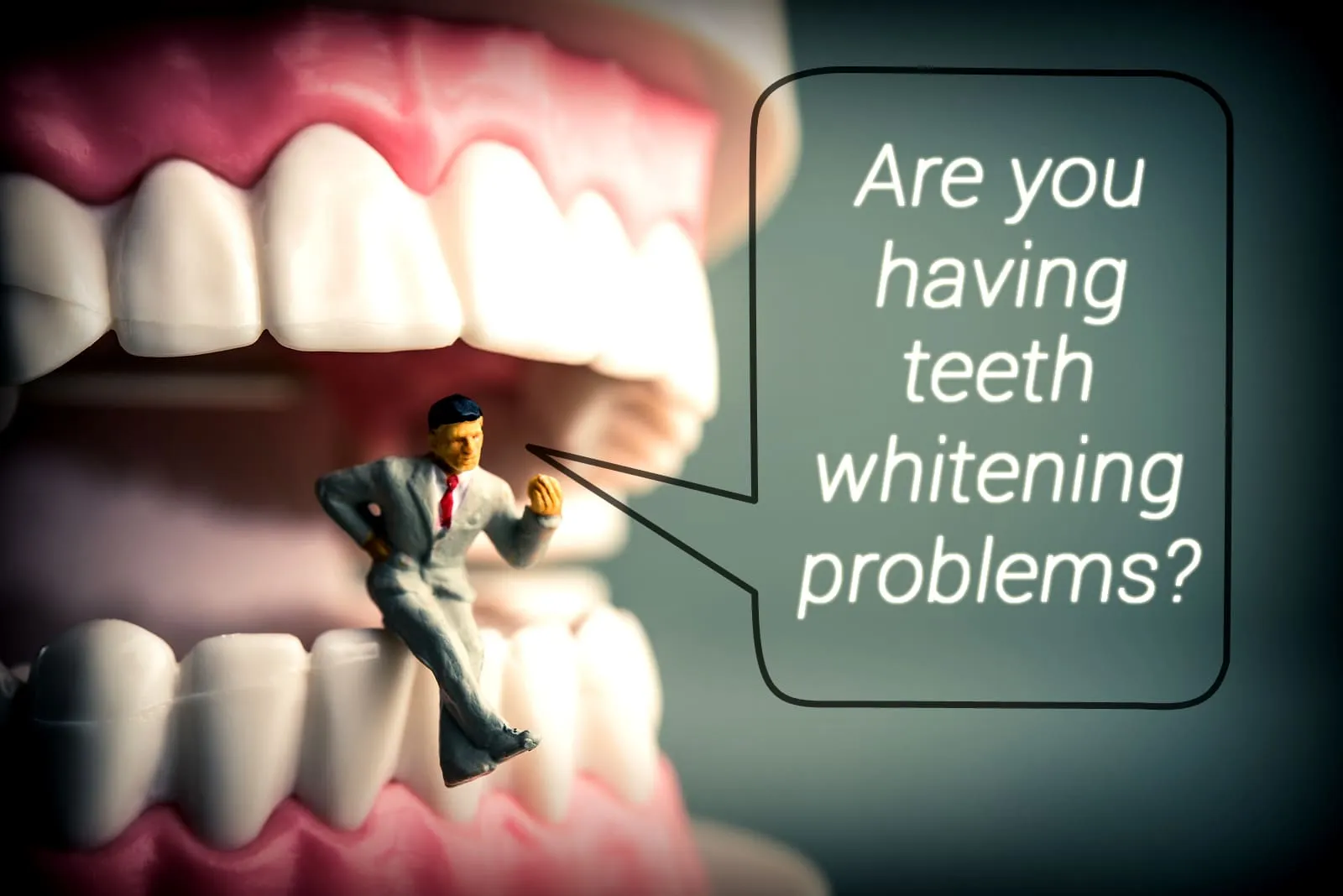Why Do Teeth Whitening Strips Hurt?
Teeth whitening strips have become a popular method for achieving a brighter smile. However, a common complaint among users is tooth sensitivity and pain. While these strips can be effective, it’s crucial to understand why they sometimes cause discomfort. The pain experienced can range from mild sensitivity to sharp, shooting pains. Several factors contribute to this, including the ingredients used, the condition of your teeth and gums, and how the strips are applied. This article delves into the top reasons why teeth whitening strips might hurt, offering insights into how to alleviate the pain and what steps to take to ensure a comfortable and effective whitening experience. Understanding these causes is the first step in preventing or managing any discomfort during the teeth whitening process, allowing you to enjoy a brighter smile without unnecessary pain.
Sensitivity to Whitening Agents
The primary reason teeth whitening strips cause pain is the active ingredient, typically hydrogen peroxide or carbamide peroxide. These chemicals work by penetrating the enamel and breaking down stain molecules. However, they can also irritate the nerves within the teeth, leading to sensitivity. The concentration of the peroxide plays a significant role; higher concentrations often lead to more intense sensitivity. This is because the stronger the solution, the more rapidly it can penetrate the enamel and irritate the nerves. The sensitivity experienced can manifest as a dull ache, sharp twinges, or heightened discomfort when consuming hot or cold foods and drinks. The degree of sensitivity varies from person to person, depending on individual tooth structure and existing dental conditions. This makes understanding the concentration and the nature of your teeth critical when selecting and using whitening strips.
How Whitening Strips Work
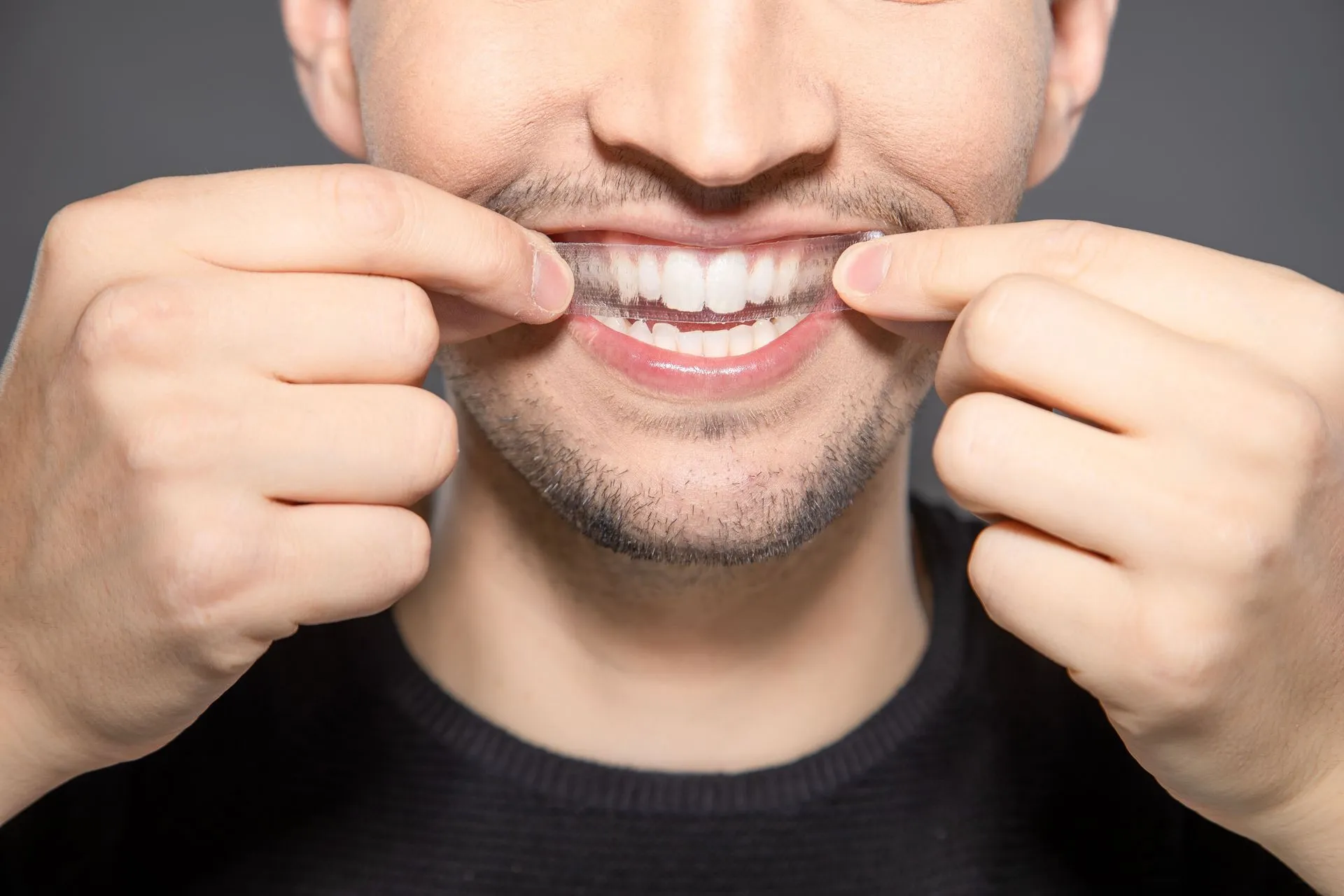
To understand why whitening strips cause pain, it is essential to know how they work. Whitening strips contain a bleaching agent, usually hydrogen peroxide or carbamide peroxide, which is designed to penetrate the enamel and break down the stain molecules within your teeth. These chemicals oxidize the stains, essentially making them less visible and leading to a brighter appearance. The process, while effective, isn’t without potential drawbacks. The bleaching agents can also affect the tooth’s nerves, particularly if the enamel is thin or if there are any existing microscopic cracks. This can lead to temporary sensitivity or pain. The more frequently you use the strips and the higher the concentration of the bleaching agent, the more intense this effect is likely to be. Knowing the mechanism helps you manage expectations and take precautions to minimize discomfort.
Enamel Erosion and Sensitivity
Tooth enamel is the hard, protective outer layer of your teeth. Its integrity is crucial in preventing sensitivity. When enamel erodes, the underlying dentin, which contains tiny tubules leading to the nerve, becomes exposed. Whitening agents can easily penetrate these tubules, causing significant sensitivity and pain. This erosion can be caused by several factors, including aggressive brushing, acidic foods and drinks, and pre-existing conditions like acid reflux. If the enamel is already thin or compromised, the whitening process can exacerbate the problem, leading to increased discomfort. Moreover, the bleaching agents themselves can contribute to enamel erosion over time, especially with overuse. Regular dental checkups and proper oral hygiene practices are essential to maintain enamel health and minimize the risk of sensitivity during whitening.
Gum Irritation and Receding Gums
Gum irritation is another significant cause of pain when using teeth whitening strips. The chemicals in the strips can come into contact with the gum tissue, causing inflammation, redness, and soreness. If the strips are not applied correctly, they can overlap onto the gums, increasing the likelihood of irritation. Receding gums, where the gum line pulls away from the teeth, can also expose more of the tooth and its roots, making them more sensitive. In these cases, the whitening agents can directly affect the root surfaces, leading to significant discomfort. People with existing gum problems or those prone to gum recession should exercise extra caution when using whitening strips and consider consulting a dentist before starting the process. Using strips with precision and avoiding contact with the gums is vital to prevent this type of pain.
Chemical Burns from Whitening Strips
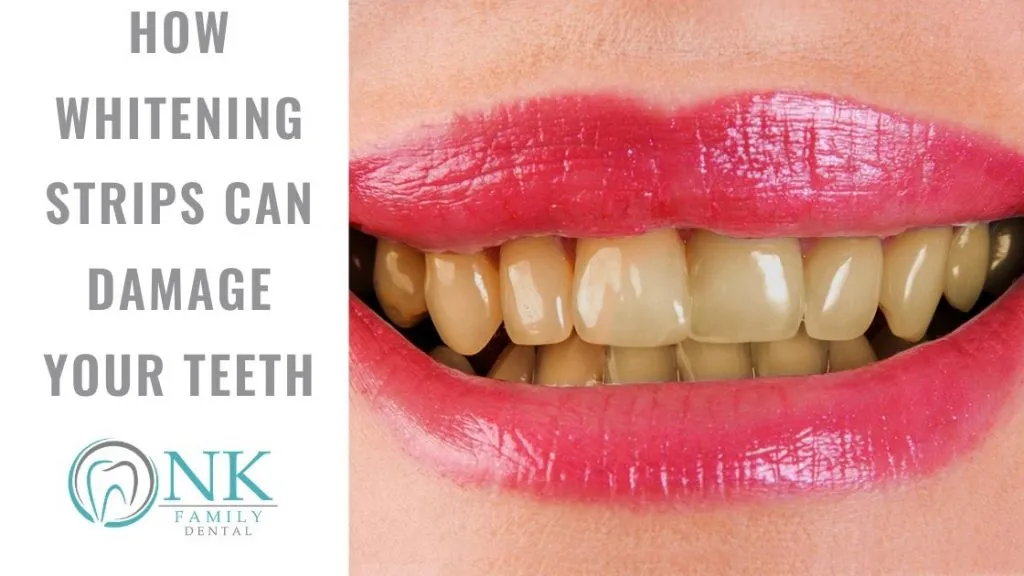
In some cases, whitening strips can cause chemical burns to the gums and soft tissues in the mouth. This typically happens when the concentration of the bleaching agent is too high or the strips are left on for too long. The symptoms of a chemical burn can include white or red patches on the gums, blisters, and intense pain. If the strips are not properly applied, the whitening agent can leak and come into direct contact with the soft tissues, leading to irritation. While these burns are usually temporary, they can be very uncomfortable and may require professional dental treatment. Always follow the manufacturer’s instructions carefully and never exceed the recommended treatment time. If you experience any signs of a chemical burn, stop using the strips immediately and consult a dentist.
Using Strips Incorrectly
Improper use of teeth whitening strips is a frequent cause of pain and discomfort. This includes not following the instructions on the packaging, which can lead to several problems. Applying the strips incorrectly, such as placing them too high or too low on the teeth, can cause the whitening agent to come into contact with the gums, leading to irritation and pain. Leaving the strips on for longer than the recommended time can also increase sensitivity and the risk of chemical burns. Furthermore, failing to brush your teeth before applying the strips can trap food particles and bacteria, potentially worsening irritation. It’s crucial to read and follow the instructions carefully to avoid these issues. Regular and careful application is the key to successful whitening without pain.
Misuse of Whitening Strips
The misuse of teeth whitening strips can greatly increase the likelihood of experiencing pain and discomfort. One of the most common mistakes is overuse. Using the strips more frequently than recommended or for a longer duration can significantly increase tooth sensitivity and the risk of gum irritation. Combining whitening strips with other whitening products, such as whitening toothpaste or mouthwash, can also overload the teeth with bleaching agents, leading to excessive sensitivity. Additionally, using strips on teeth that are not suitable for whitening, such as those with fillings, crowns, or other dental work, can result in uneven whitening and increased sensitivity. Always follow the manufacturer’s guidelines and consult with a dentist to ensure that whitening strips are safe and appropriate for your specific dental situation.
Pre-Existing Dental Issues
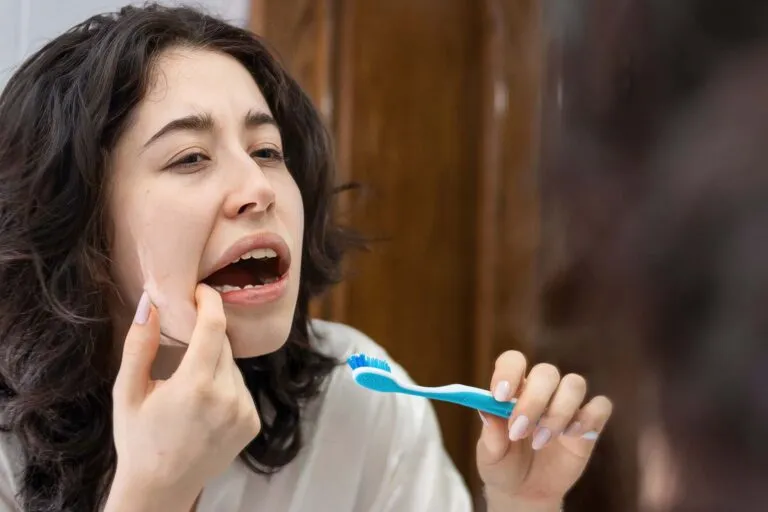
If you have pre-existing dental issues, such as cavities, gum disease, or cracked teeth, using whitening strips can often exacerbate these problems and lead to increased pain. The bleaching agents can penetrate any existing weak spots in the teeth, causing significant discomfort. Cavities, in particular, expose the sensitive inner layers of the tooth to the whitening chemicals, resulting in sharp pain. Similarly, gum disease can make your gums more vulnerable to irritation from the strips. Before starting any teeth whitening treatment, it’s essential to have a dental checkup to address any underlying issues. A dentist can identify and treat any problems that might make whitening strips unsafe or painful, ensuring a comfortable and effective whitening experience.
Undiagnosed Tooth Decay or Cavities
Using teeth whitening strips when you have undiagnosed tooth decay or cavities can be a significant cause of pain. The whitening agents in the strips can seep into the decayed areas, which are often unprotected and expose the sensitive inner parts of the tooth. This can result in sharp, shooting pains or a general increase in tooth sensitivity. Often, people are unaware that they have cavities until they start using whitening strips and experience discomfort. Regular dental checkups are crucial for detecting and treating cavities early, before they become a source of pain. If you experience increased sensitivity or pain while using whitening strips, it’s important to stop using them and consult a dentist to rule out any underlying dental issues.
Other Potential Causes of Pain
Besides the more common causes, other factors can contribute to pain when using teeth whitening strips. Sometimes, the pain might be due to the specific formulation of the strips; some brands use ingredients that are more likely to cause sensitivity. In other cases, the pain might be caused by an underlying, undiagnosed condition, such as bruxism (teeth grinding), which can make teeth more sensitive to any type of stimulation. Moreover, individuals with naturally thin enamel are often more susceptible to sensitivity. External factors, such as a diet high in acidic foods and drinks, can also weaken the enamel and increase sensitivity. A comprehensive approach to oral health, including regular dental checkups and awareness of your individual oral conditions, can help identify and address these less common causes of pain.
Allergic Reactions to Whitening Strips
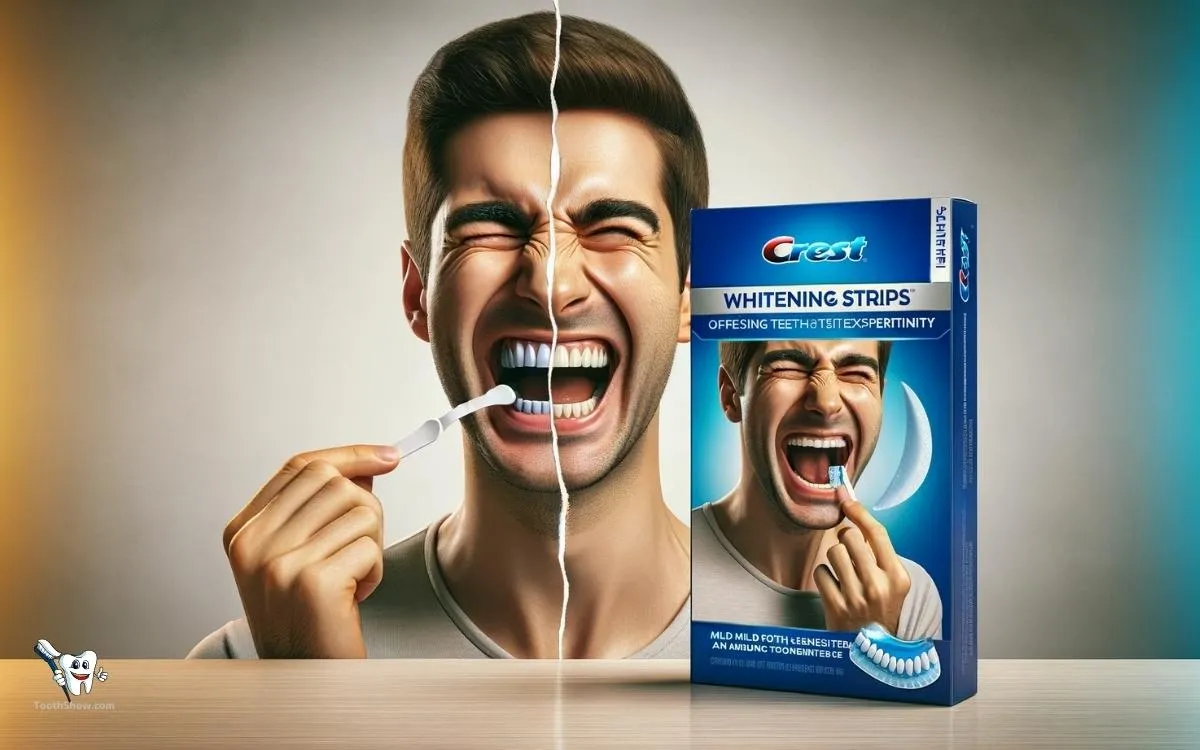
Although rare, allergic reactions to the ingredients in teeth whitening strips can also cause pain and discomfort. Some individuals may be sensitive to the bleaching agents, stabilizers, or other additives in the strips. Symptoms of an allergic reaction can include swelling of the gums, lips, or tongue, as well as itching, burning, or a rash around the mouth. In severe cases, an allergic reaction can cause difficulty breathing or swallowing, requiring immediate medical attention. If you suspect you’re experiencing an allergic reaction, stop using the strips immediately and consult a dentist or allergist. They can help determine the specific allergen and recommend alternative whitening methods or treatments.
Dry Mouth and Increased Sensitivity
Dry mouth can also amplify sensitivity when using teeth whitening strips. Saliva plays a critical role in protecting teeth by neutralizing acids and remineralizing the enamel. When the mouth is dry, the teeth are more vulnerable to the effects of the whitening agents. This can increase the risk of irritation and sensitivity. Dry mouth can be caused by various factors, including certain medications, medical conditions, and dehydration. If you experience dry mouth, it’s advisable to drink plenty of water and use a saliva substitute before, during, and after using whitening strips. Additionally, consult with your dentist to address any underlying causes of dry mouth and find appropriate solutions.
Addressing Teeth Whitening Pain
If you experience pain or sensitivity while using teeth whitening strips, there are several steps you can take to alleviate the discomfort. First, stop using the strips immediately. Then, use a toothpaste designed for sensitive teeth. These toothpastes contain ingredients like potassium nitrate, which helps block the nerve signals that cause pain. Avoid overly hot or cold foods and drinks, as these can exacerbate sensitivity. You can also use an over-the-counter pain reliever, such as ibuprofen, to manage any discomfort. Rinse your mouth with lukewarm water after eating or drinking, and consider using a fluoride mouthwash to strengthen your enamel. If the pain persists or worsens, consult your dentist. They can assess the cause of the sensitivity and recommend a treatment plan.
Choosing the Right Strips
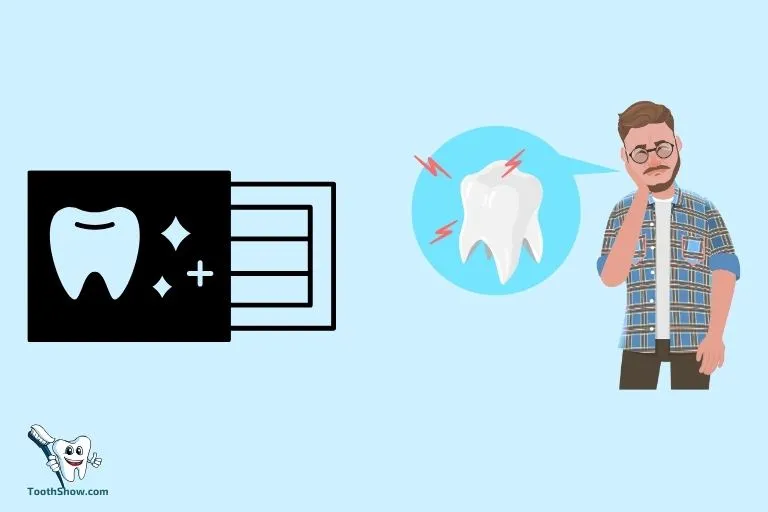
Choosing the right teeth whitening strips can minimize the risk of pain and sensitivity. Start by looking for strips with a lower concentration of hydrogen peroxide or carbamide peroxide. These strips are generally gentler on the teeth and less likely to cause discomfort. Consider strips specifically designed for sensitive teeth; these products often contain ingredients that help reduce sensitivity. Read reviews and check with your dentist to see which brands are recommended. Follow the instructions on the packaging carefully, and don’t exceed the recommended treatment time or frequency. If you have sensitive teeth, it’s a good idea to consult your dentist before beginning any whitening treatment to ensure that it is safe and suitable for your specific needs. This helps you make informed decisions about which products to use.
Consulting a Dentist
Consulting a dentist is highly recommended before starting any teeth whitening treatment, especially if you have a history of tooth sensitivity or other dental issues. A dentist can assess the health of your teeth and gums to ensure that whitening strips are a safe option for you. They can identify any underlying problems, such as cavities or gum disease, that could be exacerbated by whitening. Moreover, a dentist can offer professional advice on the best whitening products for your specific needs and provide guidance on how to minimize sensitivity. They can also monitor your progress and make adjustments to the treatment if needed. Regular dental checkups are crucial to maintain oral health, and consulting a dentist is always the best first step before embarking on any teeth whitening journey. A dentist can provide personalized recommendations and treatment options.
Alternative Whitening Methods
If you experience excessive pain or sensitivity with teeth whitening strips, alternative whitening methods are available. One option is professional teeth whitening performed by a dentist. This typically involves a higher concentration of bleaching agents, but the dentist can closely monitor your teeth and gums, adjusting the treatment as needed. Another option is custom-fitted whitening trays, which allow for more precise application and control over the amount of bleaching agent. You can also consider using whitening toothpastes or mouthwashes, which contain lower concentrations of whitening agents and are generally gentler on the teeth. Ultimately, the best approach is to discuss your options with your dentist. They can recommend the most appropriate method based on your oral health and desired results.
Preventing Pain from Whitening Strips

Preventing pain from teeth whitening strips involves taking several precautions. Always start by consulting your dentist. Follow the instructions on the product packaging carefully. Brush your teeth gently before applying the strips, but avoid brushing immediately after. Use a toothpaste for sensitive teeth for at least two weeks before starting and during the whitening process. Avoid consuming acidic foods and drinks, such as citrus fruits and soda, which can increase sensitivity. Limit the duration and frequency of use; don’t overuse the strips. Be careful to apply the strips correctly, avoiding contact with your gums. If you experience any pain or sensitivity, stop using the strips immediately and consult your dentist. By taking these steps, you can minimize the risk of discomfort and achieve a brighter smile safely.
Following Instructions Carefully
One of the most critical steps in preventing pain from teeth whitening strips is to follow the instructions provided on the product packaging meticulously. These instructions are designed to ensure the safe and effective use of the strips. Pay close attention to the recommended treatment time, the frequency of use, and how to apply the strips correctly. Avoid leaving the strips on for longer than directed, as this can increase the risk of sensitivity and chemical burns. Make sure to brush your teeth gently before applying the strips and avoid brushing immediately after. Read all warnings and precautions listed on the package. If you have any questions or concerns, consult your dentist before starting the treatment. Following these instructions will help you minimize the potential for pain and maximize the results.
Using Sensitivity Toothpaste
Using a toothpaste designed for sensitive teeth is an essential strategy for preventing and managing pain from teeth whitening strips. These toothpastes contain ingredients such as potassium nitrate or stannous fluoride, which help block the pathways to the nerves within your teeth, reducing sensitivity. Start using the toothpaste at least two weeks before you begin the whitening treatment to allow the ingredients to build up in your teeth. Continue using the toothpaste throughout the whitening process, and even afterward, to maintain the protective effect. Brush your teeth gently twice a day with the sensitivity toothpaste, and make sure to cover all surfaces of your teeth. This proactive step can significantly reduce the likelihood of experiencing pain and help you enjoy a more comfortable teeth whitening experience. Choose a brand recommended by your dentist for best results.
Avoiding Overuse
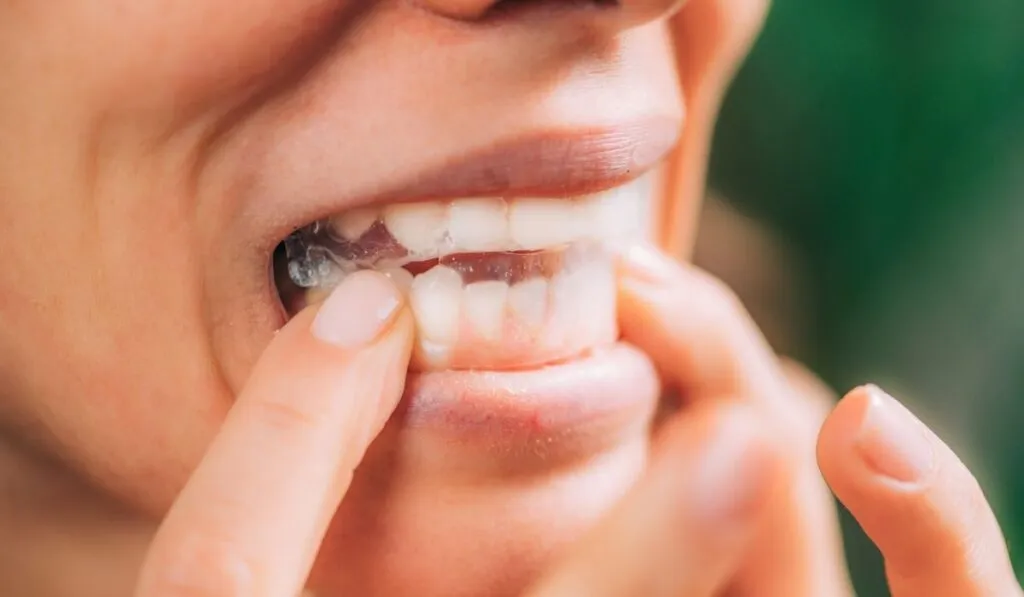
Avoiding overuse of teeth whitening strips is crucial to minimize the risk of pain and sensitivity. The directions on the product packaging typically specify the recommended frequency and duration of use. Overusing the strips can lead to increased tooth sensitivity and potentially damage the enamel. Do not exceed the recommended treatment time, and avoid using the strips more often than advised. For example, if the instructions recommend using the strips once a day for 30 minutes, do not increase the frequency or duration. Allow your teeth to rest between treatments to prevent excessive exposure to the whitening agents. If you’re not seeing the results you want, consider consulting your dentist; they can recommend a more suitable whitening plan. The best approach is always moderation.
When to Seek Professional Help
Knowing when to seek professional help is crucial when using teeth whitening strips. If you experience any significant pain or discomfort, such as sharp, shooting pains, prolonged sensitivity to hot or cold, or inflammation of the gums, stop using the strips immediately. Contact your dentist to assess the cause of the pain. Other reasons to seek professional help include the development of blisters or sores in your mouth, persistent toothaches, or any unusual changes in your teeth or gums. Your dentist can provide a comprehensive evaluation and recommend appropriate treatment options, which might include alternative whitening methods, desensitizing treatments, or addressing any underlying dental issues. Regular dental checkups are also crucial for maintaining optimal oral health, and you should always consult your dentist before starting any teeth whitening treatment.
